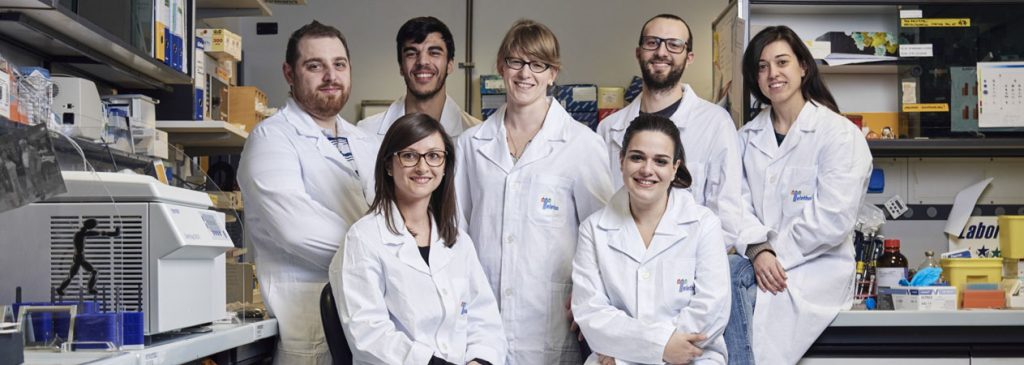Gene therapy has reached significant clinical milestones but its application remains difficult for a number of disorders and cell types for which basic knowledge to develop more efficient protocols and strategies is still lacking.

Now, a new study published in Cell Stem Cell* by the research team led by Anna Kajaste-Rudnitski at the San Raffaele Telethon Institute for Gene Therapy (SR-Tiget) in Milan, Italy, in collaboration with Greg Towers and his team at the University College London (UCL), shows that a naturally occurring compound, cyclosporine H, significantly increases the efficiency of lentiviral vector-mediated gene transfer in blood stem cells. These type of vectors, derived from infectious HIV, are already widely used in the clinic. This new “ingredient” will increase their efficiency, opening novel therapeutic avenues for disorders such as beta-thalassemia and contributing to reducing the cost of existing gene therapies.
In order to correct a disease causing genetic defect, gene therapy inserts a functional copy of the defective gene in affected cells. This is done though viral vectors: modified viruses, deprived of their infectious components, which instead of damaging the cells will deliver some therapeutic DNA into them. Not all cells, however, let these vectors enter with equal efficiency. Some cells harbor defense mechanisms against viruses that will prevent their entry, rendering gene therapy more difficult.
In particular, blood stem cells have these antiviral defenses constantly turned on, as opposed to T lymphocytes or other more permissive cell types that activate them only when needed.
The team of Anna Kajaste-Rudnitski and collaborators has discovered that gene therapy is less efficient in stem cells because of these antiviral barriers. These hurdles do not compromise clinical benefit for some disorders such as metachromatic leucodystrophy and the Wiskott-Aldrich syndrome, both successfully treated at SR-Tiget, but for others the desired outcomes are not always achieved despite the use of large amounts of vector. Cyclosporine H allows to correct more cells with less vector in one single passage thanks to its capacity to specifically overcome one of these antiviral barriers. “A gene therapy protocol that includes this compound will be far more efficient, guaranteeing a clinical benefit even with less vector. This could be implemented in settings in which the current clinical outcomes remain suboptimal or for therapies still in pre-clinical development” explains Anna Kajaste-Rudnitski.
The researchers have found that cyclosporin H works by temporarily degrading IFITM3, a host cell protein involved in the defense against several viruses, without other immunosuppressive effects. Indeed, the levels of IFITM3 bounce back to normal around 6 hours after the treatment and without affecting the biological functions of these cells, a good starting point for its future clinical application.“Once we identified this mechanism of action, we noticed that the stem cells from different donors actually express different levels of IFITM3 and that this negatively correlated with their permissivity to gene transfer. Importantly, we observed that the more this protein is expressed, the stronger is the effect of our compound. This means that the patients that are the hardest to treat with the standard gene therapy protocols will also be those that will benefit the most from the addition of cyclosporine H”.
Some gene therapy protocols already use molecules to enhance efficiency of vectors. This is the case of prostaglandin E2, currently in testing in a new gene therapy protocol for the treatment of another severe genetic disorder, the type I mucopolysaccaridosis, at SR-Tiget. “However, cyclosporin H is even more potent and we know the mechanism by which it acts, rendering its therapeutic use more controlled. Indeed, cyclosporine H would not only allow increasing significantly the efficiency of gene therapy, but would also guarantee the same clinical benefits for all patients, independently of how resistant to gene correction they would be due to their IFITM3 expression levels” Kajaste-Rudnitski concludes.
This work has been funded by the Fondazione Telethon, the European Commission and the Wellcome Trust UK.